This condensed excerpt first appeared in Vol. 10, No. 1 (Spring 2006). Access the full article via Project MUSE.
A door slammed shut, startling me from a sleep too light and too brief. Struggling to get my bearings, I raised up on my elbows and peeked out the passenger side window of my pickup truck. A yellow ball, brilliant and unrelenting, shot rays through a canopy of pine needles. It was already light, already hot, and I was already in a bad mood. The parking lot of Red Rocket Fireworks, the outskirts of Rock Hill, South Carolina, the Fourth of July.
I had spent most of the dark morning hours in descent, skimming the interstates from Beckley, West Virginia, to Rock Hill, fleeing the Alleghenies in a mad dash to the Piedmont, downing too many Mountain Dews and Chick-O-Sticks at seventy-five miles per hour, only to arrive two hours before opening time at the cavernous Red Rocket warehouse. A person in the fireworks business is rarely surprised by anything, and arriving at work to find a man in combat boots and a sweaty baseball cap sprawled in the seat of a pickup hardly qualifies as extraordinary. So I was invited in, offered coffee (which I declined in favor of another soda), and given a seat on a vinyl chair the color of a ripe persimmon. The assistant manager, wearing a pink golf shirt and khaki Duckhead shorts, took my order, which I had scrawled on the blank side of a four-by-six note card.
I need a monkey driving a car, one hen laying eggs, two cuckoos, a fairy with a flower, one climbing panda, one cock crowing at dawn, and whatever we’ve got in the way of a Jupiter’s fire or a thunder blast or a big bear.
I could imagine the disconnect an innocent passerby might have experienced upon hearing such nonsensical spew. Fireworks speak is like the names of football plays, or military instruction manuals, or the banter of social-science graduate students: it just doesn’t make any sense taken out of context, and the context is so esoteric that explanation to the uninitiated is an exercise in futility.

My mission in South Carolina on this muggy Independence Day morning was a simple one: to load as many cases of fireworks as I could into my long-bed pickup so that the good folks of Beckley, West Virginia, would not have to celebrate the anniversary of our severance from the British crown in peace and quiet. I must confess that this was a noble mission, no matter how you look at it. Whether it was patriotic idealism or capitalism that fueled my quest, by early afternoon I was back in Beckley, and by nightfall most of the boxes were empty. All around Raleigh County, monkeys were driving cars, hens laying eggs, pandas climbing, fairies flowering, thunders blasting. A mighty good time was had by all, and I sat on the bed in my room at the Pagoda Motel counting money and watching SportsCenter.
I need a monkey driving a car, one hen laying eggs, two cuckoos, a fairy with a flower, one climbing panda, one cock crowing at dawn, and whatever we’ve got in the way of a Jupiter’s fire or a thunder blast or a big bear.
There is nothing inherently southern about fireworks—they were, after all, invented by the Chinese some twelve hundred years ago—but southerners have long held an affinity for fireworks shared by few other American regional groups.2 In the United States fireworks displays are as ubiquitous as the flag. We use industrial-strength displays to celebrate everything from New Year’s to ethnic holidays to political rallies, and few of us can remember the last time we saw a home-team homerun that failed to light a spark or two. Sure, we all watch fireworks. In the South, though, we use fireworks; it’s a hands-on affair. Teenagers stage bottle-rocket wars, farmers fight varmints of the air and of the ground with M-60s and whistle chasers, small children torment pets with backyard firecrackers, and toddlers wield sparklers like tiny light sabers.
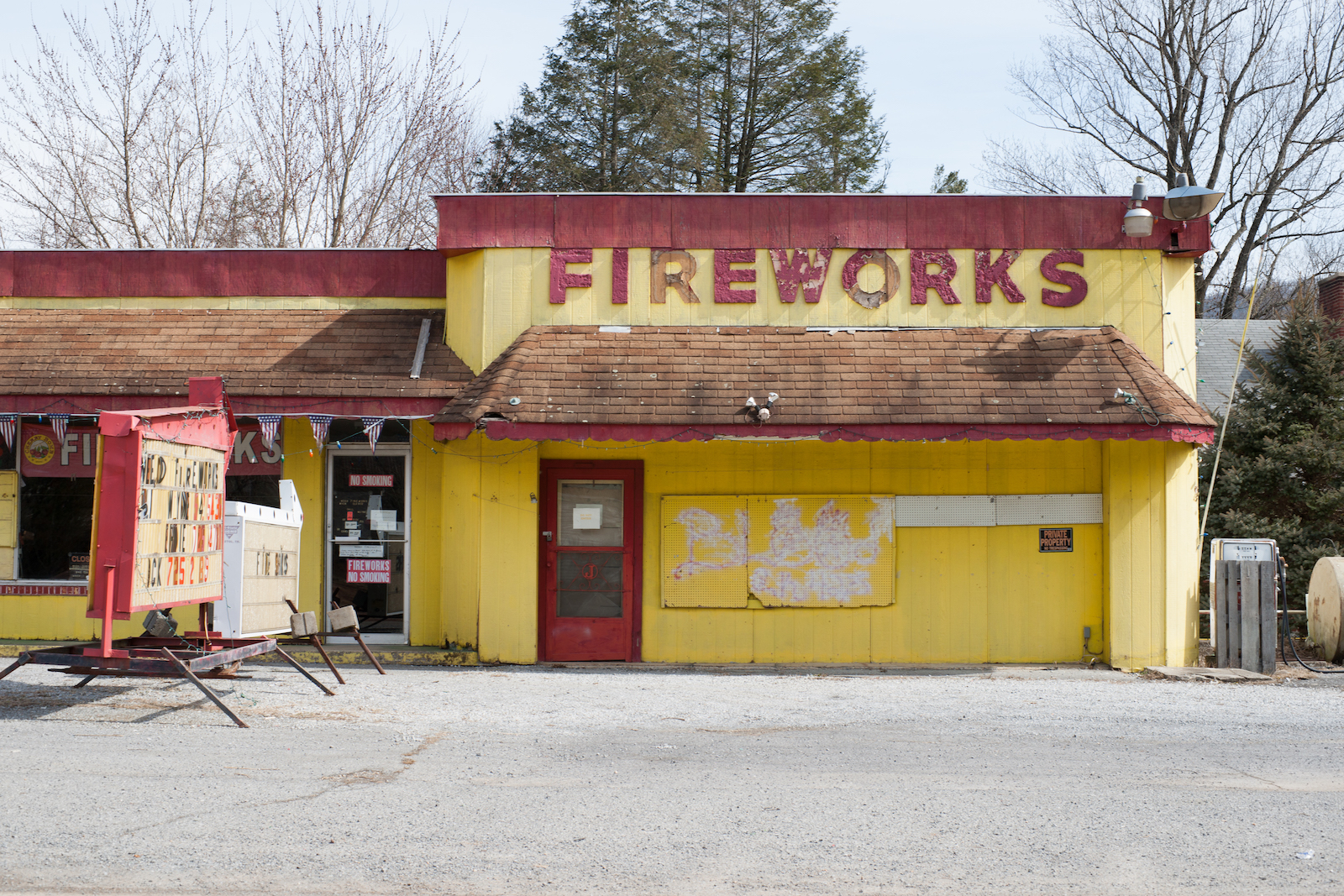
Southerners like fireworks so much that for many years it was customary to shoot them off at Christmas, even more so than on Independence Day. According to most observers, including the erstwhile Agrarian poet John Gould Fletcher, this practice stemmed from unrepentant Confederates who appreciated good fireworks but who were in no mood to celebrate what had become a Yankee holiday. White southerners, suffering the sting of defeat and the humiliation of military occupation, sulked and bristled on the Fourth of July in 1865 as former enslaved peoples commemorated wildly their first true Independence Day. Mary Chesnut called it the “Black 4th of July.” Five months later the citizens of Atlanta celebrated Christmas with fireworks displays. Only after the end of Reconstruction would most southerners revive their modest Independence Day celebrations, and only after World War II would the South truly rejoin the Union in unbridled Fourth of July merriment.3 In some places in the South fireworks are still more popular for Christmas and New Year’s. One can almost delineate the Deep South from the rest of the South by observing where you can buy fireworks for Christmas.
Not surprisingly, southerners’ affinity for fireworks has rarely been recognized in any conscious way. In his book Fireworks: A History and Celebration, George Plimpton found nothing worthy of mention below the Mason-Dixon line. Plimpton’s subjects were the Gruccis and other producers of industrial-strength, display-show fireworks, the kinds that ring in the New Year over New York harbor. Whatever sexiness and allure there is to fireworks is tied up in those larger-than-life extravaganzas and their creators, almost none of which are located in the South. The fact that fireworks are so easy to come by in the South renders the ostentatious displays a little less satisfying, a little too bystanderish in a region that not too long ago still celebrated special occasions by firing guns in the air and rocketing eighty-pound anvils into the black night sky.4 In the South the fireworks business remains a populist and Protestant one, taking the goods, and the dangers, directly to the people, no interceders needed.
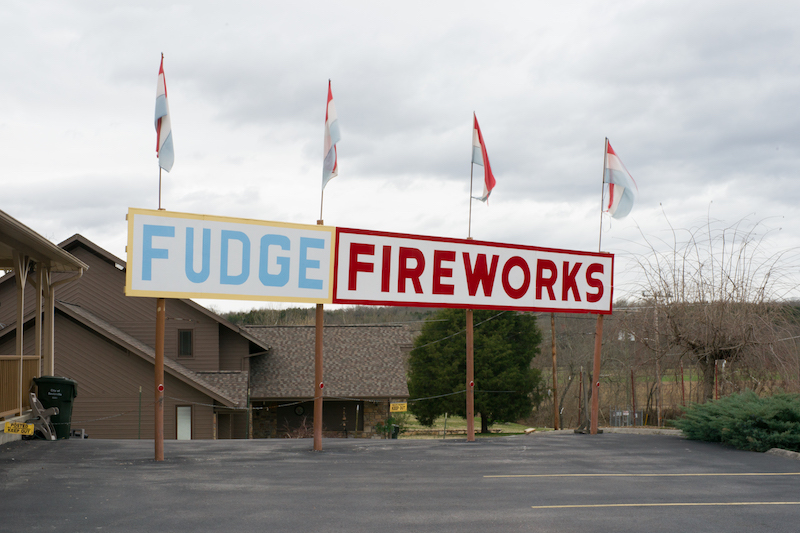
Fireworks are plentiful in the South, and of the eight states that completely ban the sale and use of fireworks, only one, Georgia, is in the region. Seven of the eleven former Confederate states are among those with the nation’s most liberal fireworks laws, which allow for the purchase and use of almost all Class C fireworks—firecrackers, roman candles, rockets, aerial displays, and anything else containing no more than fifty milligrams of powder. If you throw Oklahoma into the mix, the South contains more than half the states that permit almost unlimited Class C fireworks sales.
Most fireworks operations fit into one of two categories: those operated as fundraisers for local churches or civic groups and, more commonly, those operated as a franchise for a larger retail fireworks company. Retail fireworks companies often operate dozens, even hundreds, of shops (tents, mobile homes, permanent buildings) by contracting them out to managers. One of the incongruities of the fireworks business is that, despite its transient nature and carnival atmosphere, the folks running the cash registers and hanging the bunting are quite “normal.” Due to the timing of the fireworks seasons, summer break and Christmas break, many of these managers are teachers or college students looking to supplement their too often meager incomes without sacrificing an entire vacation. The teachers may be locals or outsiders in their town of business. For instance, Fireworks World of Batesville, Arkansas, hires a number of educators and other managers from around north central Arkansas and sends them to run locations in Texas, Tennessee, West Virginia, and other states; occasionally they hire “local” managers who live and work in far flung locations in Texas, Tennessee, or West Virginia. Sometimes the retail company franchises with a church or civic group. The companies generally cover permitting, ordering of stock, equipment, and supplies, tent rental, and shipping; managers generally receive a percentage of the gross sales, out of which they hire laborers and pay for food and lodging.
I was first drawn into the retail fireworks business more than a decade and a half ago, in the summer after my high school graduation. My high school basketball coach—never one to avoid even the most dubious fly-by-night scheme—”took a tent” with a then-small Batesville, Arkansas, operation called Fireworks World and hired me to work in the tent for a little more than two weeks. I was paid $600 and provided with meals and a hotel bed. The coach brought along a second worker to be a night watchman. (Tents are unhandy when it comes time to lock up at night, so the flaps are rolled down and the low man gets to spend the night on a cot, fighting mosquitoes and listening to the radio until exhaustion obscures the cacophony of noises in the wee hours.) Our destination was a forty-by-sixty-foot red and white tent perched atop a barren knoll fronting a busy four-lane highway in Lowell, Arkansas, just north of Springdale in the burgeoning corridor sometimes referred to as “Northwest Arkansas City.” Life in the tent was odd. You work like a dog for a day or so, hanging lights, running electrical cords, putting up tables (plywood boards on miniature sawhorses), hanging red, white, and blue bunting, and displaying dozens of different fireworks items. Then you sit. For the next ten or twelve days you sit and wait for a handful of customers to come by, you sit and read until your eyes hurt, you sit and count cars, you sit and listen to the Cardinals, and, sometimes, you just sit. You hope that people will see your red and white tent with its bunting and its red, white, and blue plastic flags. You hope that they will remember your tent and come back on the third or fourth of July, when 90 percent of the season’s selling takes place.
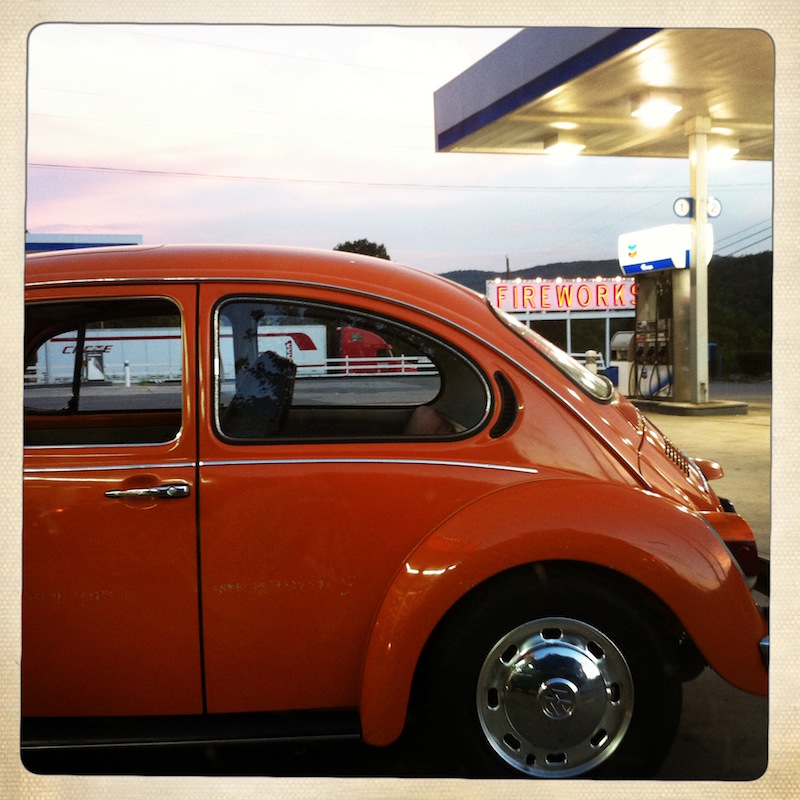
It was as long a two-week span as I had ever suffered through. It was not unusual for me to spend fourteen to sixteen hours a day sitting under the tent, much of the time alone as my old coach ran errands, went sightseeing, and spent evenings scrimmaging with Razorback basketball players in nearby Fayetteville. But our time was not without event. The night watchman foiled a would-be theft with a flying tackle, and I learned to bluff my way through a sale by describing the brilliant displays of tubes and cakes (fireworks lingo for tall display items and short, fat ones, respectively) that I had never seen. The Fourth of July—the day that usually generates as much as half of a tent’s total sales—was a disaster. A hard shower that morning sent streams rushing over the dirt and gravel floor; yet we noticed that lowering all the tent flaps (to keep out blowing rain) seemed to draw more customers than ever before, a testament to their love of fireworks and to the indomitable American spirit. By midafternoon a scorching sun had evaporated every drop of moisture, and my little brother—recruited for the Independence Day rush, placed in a bright red Razorback hog suit, and stationed at the edge of the highway to wave at motorists—sweated out and finally deteriorated into a swoon. He recovered, thankfully, but sales did not.
Over the following decade, as a college student and graduate student, I spent early summers and occasionally Christmas breaks selling fireworks or delivering truckloads of fireworks to tents and superstores across the South. By far the most alluring part of the job for me was the travel, not a sexy, cosmopolitan brand of business travel, mind you, but a priceless, anthropologically exhilarating series of journeys into and within the South’s diverse subregions. I sometimes fancied myself a sort of scruffy Charles Kuralt whose penance for gleefully traipsing about the commoner’s land was a few hot days peddling firecrackers beneath a carnival canopy. Over the years I worked my way up Fireworks World’s very informal ladder to become first a tent manager and finally a kind of regional manager. And the opportunities for travel increased at every step.
My decade of fireworking eventually took me through the South’s most identifiable regions: Appalachia, the Mississippi Delta, the Piedmont, the Carolina coastal plain, the Missouri bootheel, and the rolling hills and flat expanses of Texas. One summer season (about three and a half weeks) I logged more than seven thousand road miles, including a breathless, twenty-hour drive from my home in Arkansas to the North Carolina coast.
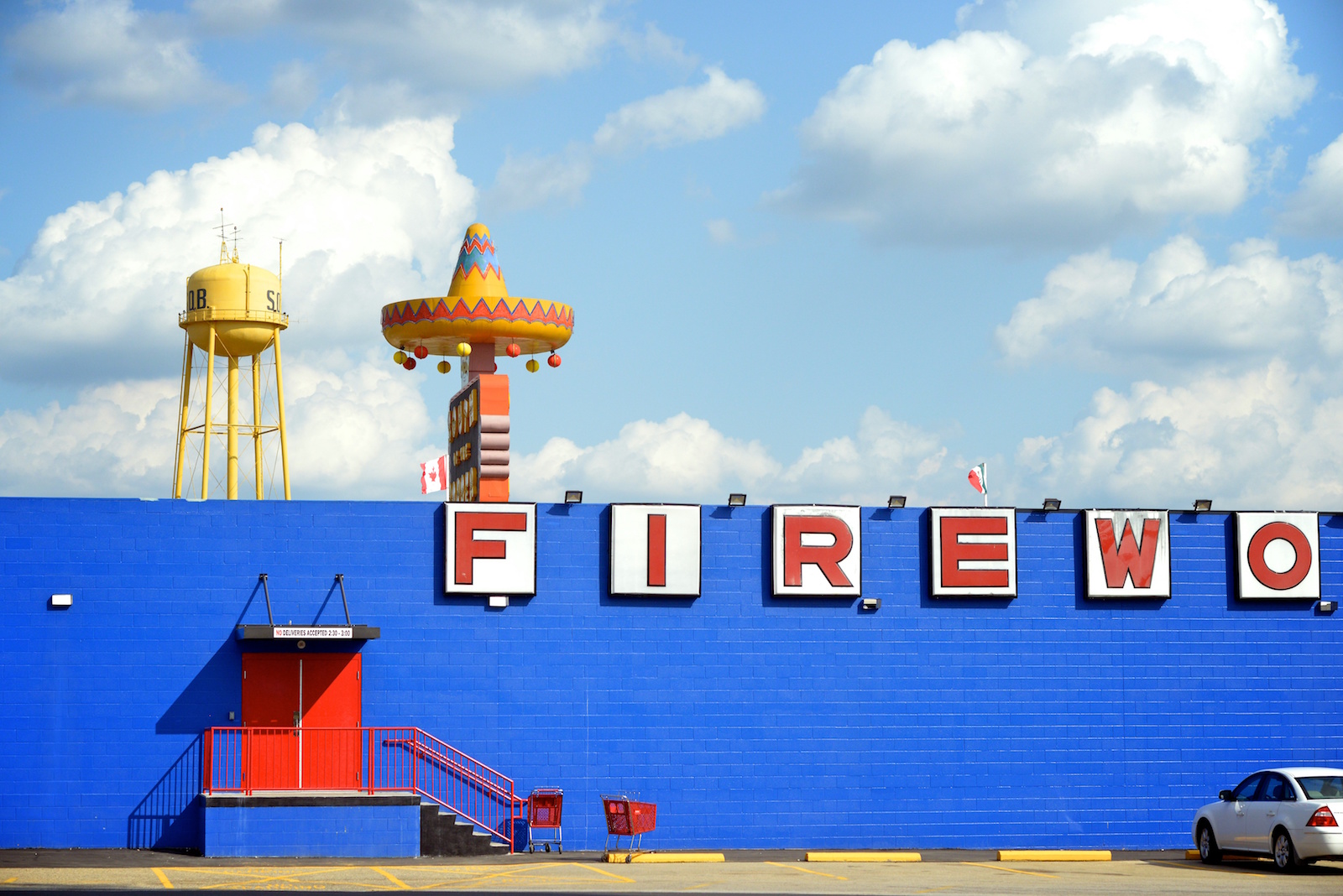
My seasonal work took me from Austin, Texas, to Kaiser, West Virginia, from Morehead City, North Carolina, to Cape Girardeau, Missouri. I spent three summer seasons in Morrilton, Arkansas, the hometown of the eminent historian C. Vann Woodward. Mostly uneventful tours they were, though one late night I did drive a convertible Corvette faster than I’d ever driven a car, or ever will again. In Greenville, North Carolina, I sat through two local television news interviews while passing hog trucks left a lingering pungency more irritating than any chicken house I had ever smelled back home in the Ozarks. In the winter season that stretches from Christmas to New Year’s, I drove delivery trucks to Houston, Shreveport, Jackson, Mississippi, and Huntsville, Alabama. On a frigid December day I drove from Little Rock all the way across northern Mississippi just to deliver a thirty-foot, inflatable Godzilla balloon to a couple of freezing old men running a tent in Tupelo. Once I stopped for dinner at the Bluebird Diner in Mt. Airy, North Carolina—satisfying my serious Andy Griffith Show fetish—and then overheated my pickup trying to pull a loaded U-Haul trailer to the crest of the Blue Ridge. I saw the sights, haggled with local officials, and dealt with tent managers in places like Washington, North Carolina, Mountain View, Arkansas, and Lewisburg, West Virginia
Although I never lucked into a bonanza location, I sometimes made a decent profit and never came back home empty-handed. Business was good in Morrilton and Beckley and Rocky Mount, not so good in Greenville and Cape Girardeau. There were days so slow that I would read through an entire book, others so hectic that there was no time to eat. One mid-June day in Wilkesboro, North Carolina, my tent, which had mistakenly been erected on a parking lot behind the shopping mall, grossed eleven dollars. By the end of the week we had packed up fireworks, tent, and all and headed for West Virginia. Fireworks business folklore—and there is such a thing—is filled with stories, most likely apocryphal, of wealthy midnight shoppers buying a tent’s entire stock. I never found such an enthusiast, though once I sold $500 worth of fireworks to a drunken construction worker who signed over his paycheck and who an hour later brought all of it back because he was afraid to go home and face his wife.
The Saturday night, town-cruising crowd never hesitated to hurl epithets, and heavier objects, from their Broncos and Camaros. The college kids home on summer break were probably the most abusive. One evening in Wilkesboro, a preppie, walking billboard for Tommy Hilfiger asked me if all our items were relatively benign, and then snickered to a friend, confident that I would have no idea what “benign” meant—and maybe even “relatively.” And he was right. At that moment I had been awake for twenty-four hours, and my mind was doing well to process the word “items” correctly. So I just looked at the two young men blankly and said, “I reckon.” The business had a way of doing that to you, dumbing you down to match people’s expectations. I often wondered how much smarter I might have been had I spent my summers stocking shelves or gutting fowl. Luckily, I think the whole experience was pretty benign, or at least relatively so.
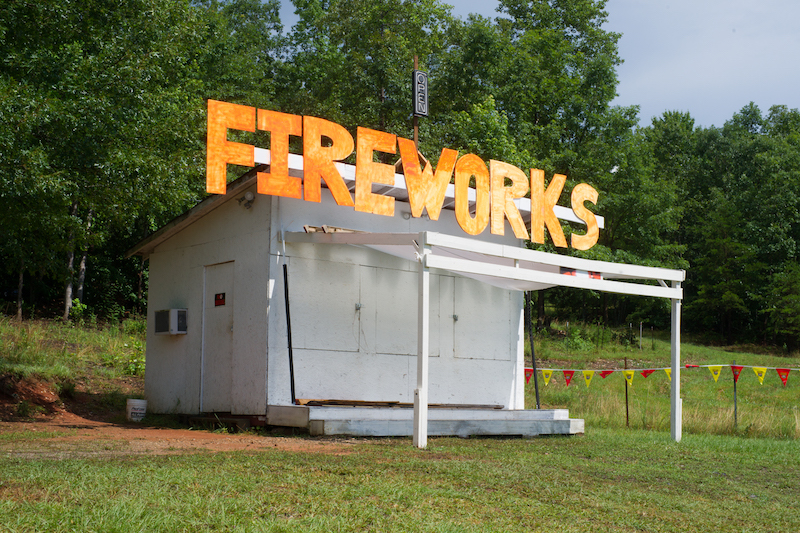
It was easy to step out of character. One afternoon in Springdale, Arkansas, in my eighteen-year old boy, just-for-the-heck-of-it stupidity, I drove through town wearing a navy blue ski mask—in the coach’s truck. Not long after, the police arrived at our tent. Someone had reported an attempted robbery at the filling station down the road, they told me, and the suspect had been driving a truck just like this one. I told them the owner of the truck was sitting in the mobile home office next door, not knowing that the coach was at that very moment sitting on the office floor counting out the cash from the previous day’s sales. Luckily for me (and the coach), they knocked. On another occasion I hauled a hitchhiker through the Ouachitas and enjoyed the brief life story, though not the smell, of an Indiana man who, it turns out, was from somewhere, too.
The fireworker learns a good deal about the South, about the different Souths, and about the people living in them. He gets a good feel for such things as the vague boundaries of the Bible Belt, the variations on an elusive “southern” dialect, and the Americanizing effects of fast-food franchises, chain stores, and the media industry. He also comes to appreciate the consumer-culture commonalities that defy boundaries of race and ethnicity.
I suppose that like a lot of things we in the South think of as southern, shooting off fireworks has a much wider appeal. Maybe the proliferation of and appreciation of fireworks is a sort of political creation—maybe southerners purchase and shoot off fireworks because they can, and maybe more Americans would if they could. Perhaps the working classes around the nation and the globe share a passion for shooting off fireworks, and maybe the South’s popular culture and image has simply been more closely tied to the actions and tastes of its lower orders than have the images of other regions. Whatever the reason, the South is, as anyone in the business would tell you, fireworks country. And we’ll light them ourselves, thank you.
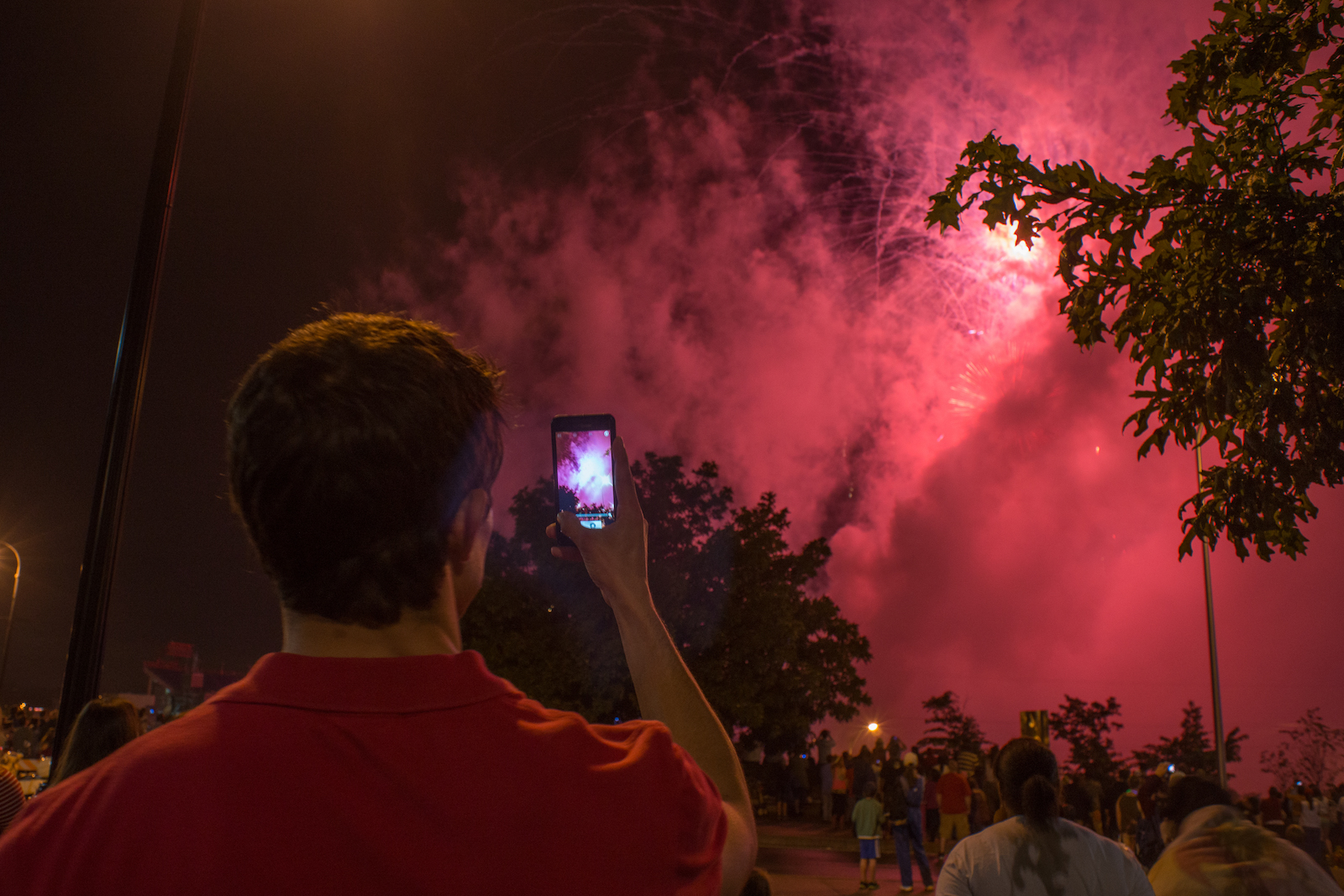
Brooks Blevins is the Noel Boyd Professor of Ozarks Studies at Missouri State University. He is the author of several books on the history of the Ozarks and the South, including Ghost of the Ozarks: Murder and Memory in the Upland South (2012).
Header image: Nashville, Tennessee, by Tammy Mercure.
NOTES
2. See Alan St. H. Brock, A History of Fireworks (George G. Harrap & Co., 1949).
3. John Gould Fletcher, Arkansas (University of North Carolina Press, 1947), 269; Ron Taylor, “True South; Illegal Fireworks,” Atlanta Journal and Constitution, 30 June 1991, M2; Diana Karter Appelbaum, The Glorious Fourth: An American Holiday, An American History (Facts on File, 1989), 98; C. Vann Woodward, ed., Mary Chesnut’s Civil War (Yale University Press, 1981), 832. See also Leonard I. Sweet, “The Fourth of July and Black Americans in the Nineteenth Century: Northern Leadership Opinion within the Context of the Black Experience,” Journal of Negro History 61 (July 1976): 256–75.
4. George Plimpton, Fireworks: A History and Celebration (Doubleday, 1984), 55; the reference here is to the tradition called “firing the anvil,” whereby blacksmiths would turn one anvil upside down, fill the hollow with powder, place another anvil right-side-up on top of it, and then light a fuse, sending the anvil on top flying into the air. In Europe this custom was most often associated with the November 23 feast of St. Clement, patron saint of the blacksmith. Americans enjoyed firing the anvil so much that the celebration came to mark marriages, Christmas, New Year’s, and the Fourth of July; Nancy McDonough, Garden Sass: A Catalog of Arkansas Folkways (Coward, McCann & Geoghegan, 1975), 108.


